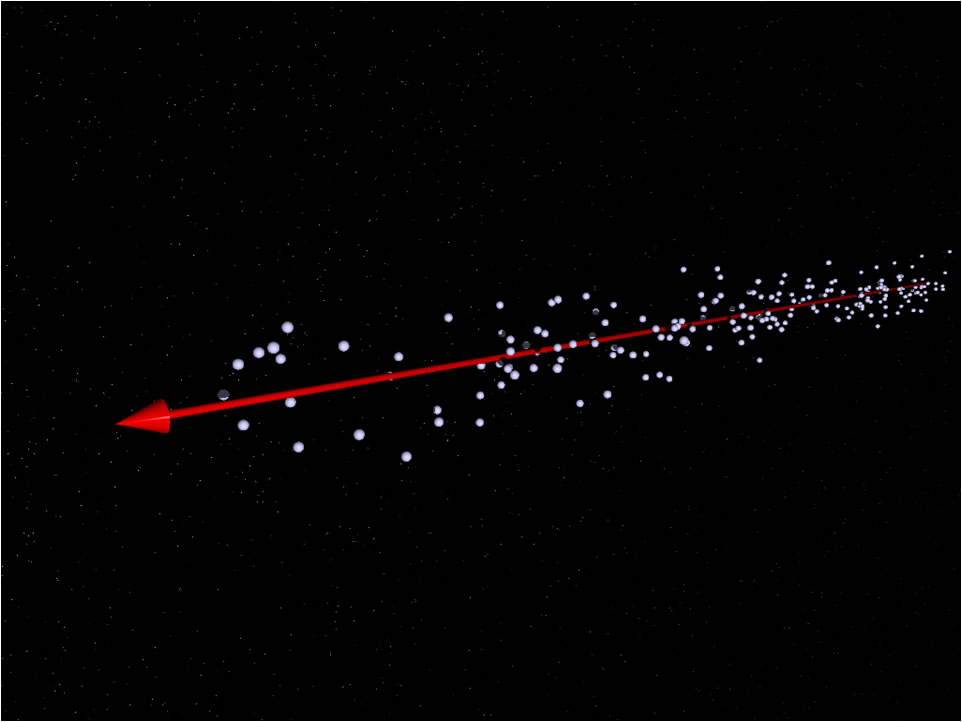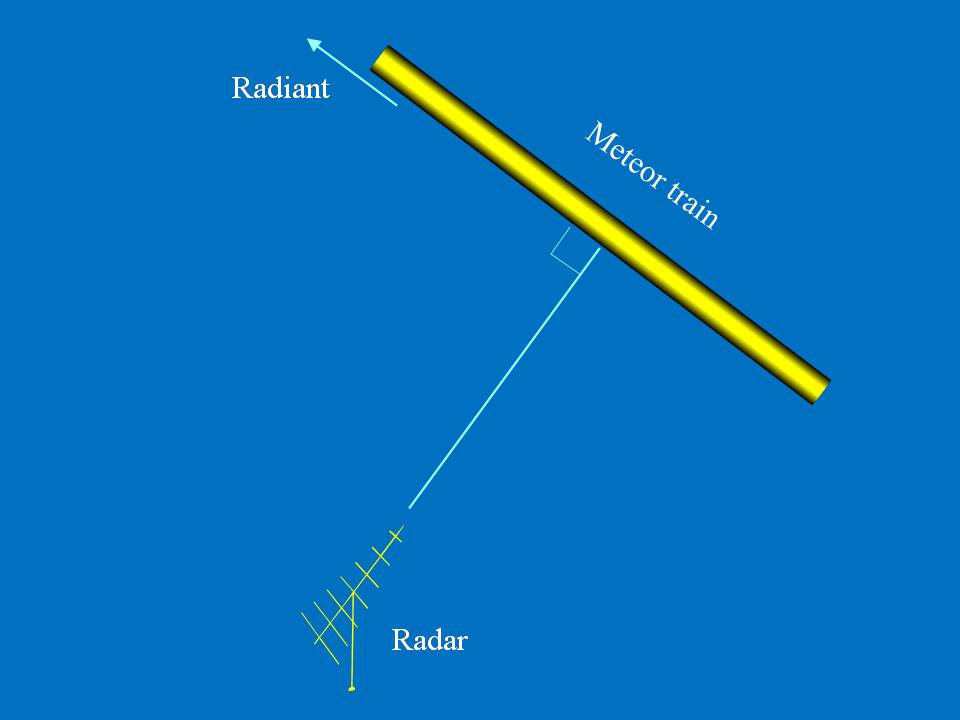Meteor Radar Observations
Introduction (1 of 2)
Radio waves can reflect off ionized trails left behind as meteoroids ablate in the atmosphere. As the meteoroid moves through the atmosphere (red line below) collisions with air molecules produce ions and electrons along the trail (shown as small grey spheres below)

The electrons are small enough to respond to the incident radio waves by vibrating themselves as dipole radiators. Provided the trail is small compared to the radio wave, the electrons will tend to reflect back to the radar in phase and produce a strong specular signal. This specular reflection implies that only that portion of the trail at right angles to the local apparent meteor radiant will contribute to the returned signal.




